Abstract
The rates of penetration of various cations through isolated apricot Prunus armeniaca L. leaf cuticles were determined. Steady state rates were measured by using a specially constructed flow-through diffusion cell. The penetration rates of the monovalent cations in group IA followed a normal lyotropic series, i.e., CS+ ≥ Rb+ > K+ > Na+ > Li+. The divalent cations all penetrated through the cuticle more slowly than the monovalent cations. Comparison of the relative values of k (permeability coefficient) and D (diffusion coefficient) indicates that the penetration of ions through isolated cuticles took place by diffusion and was impeded by charge interactions between the solute and charge sites in the penetration pathway. Cuticular penetration rates of K+ and H2O at pH above 9 were of similar magnitude. At pH 5.5 H2O penetration was not affected but that of K+ was greatly reduced. From this observation and from data on cuticle titration and ion adsorption studies, we hypothesize that cuticular pores are lined with a substance (perhaps a protein) which has exposed positively charged sites.
Full text
PDF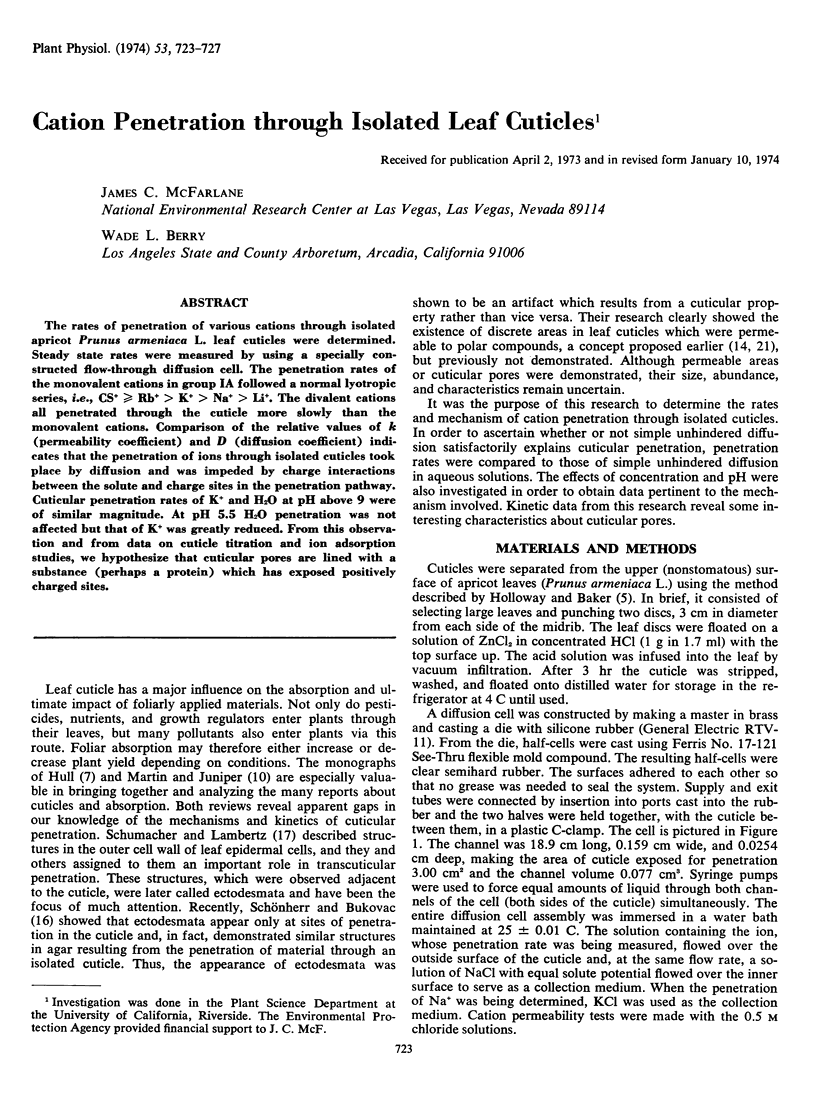
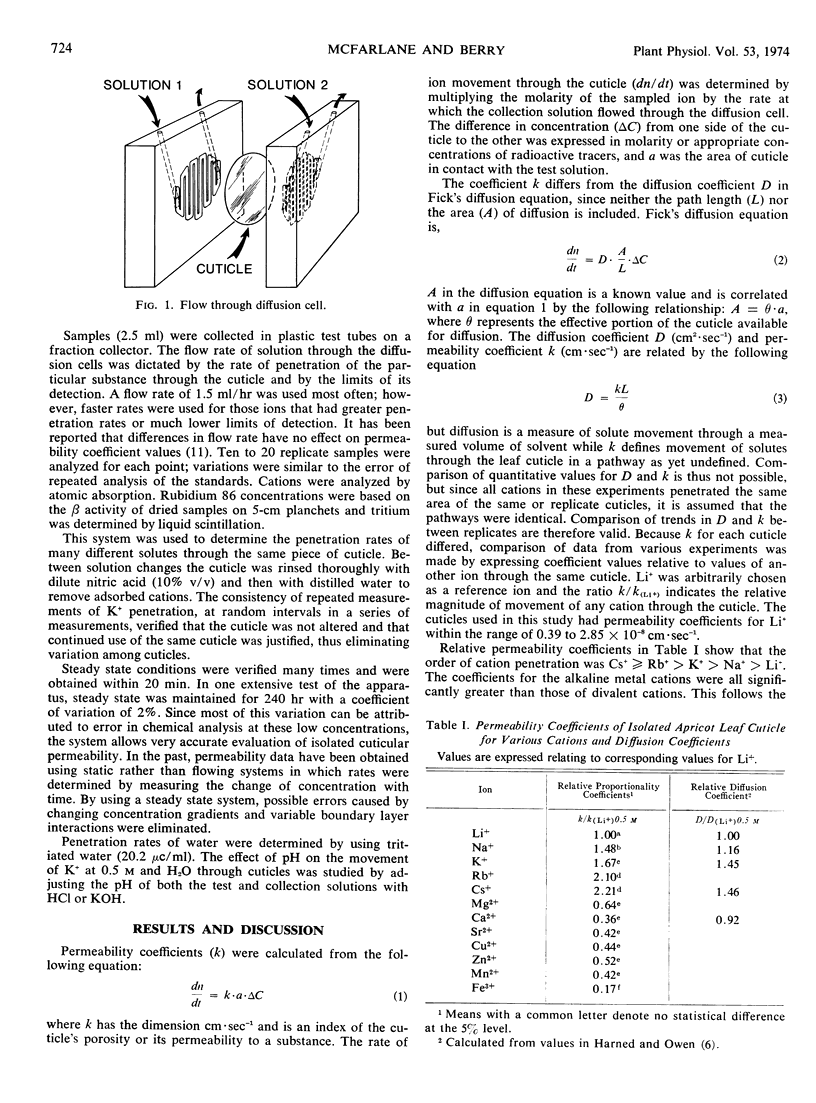
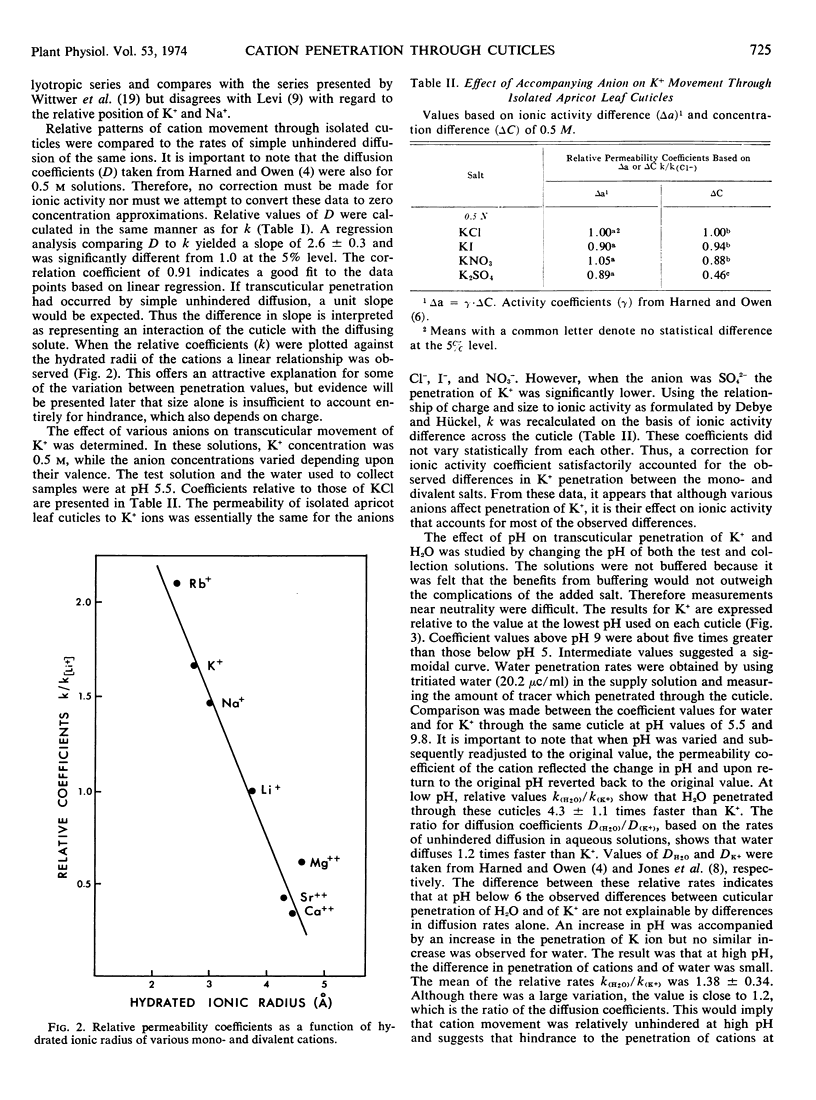
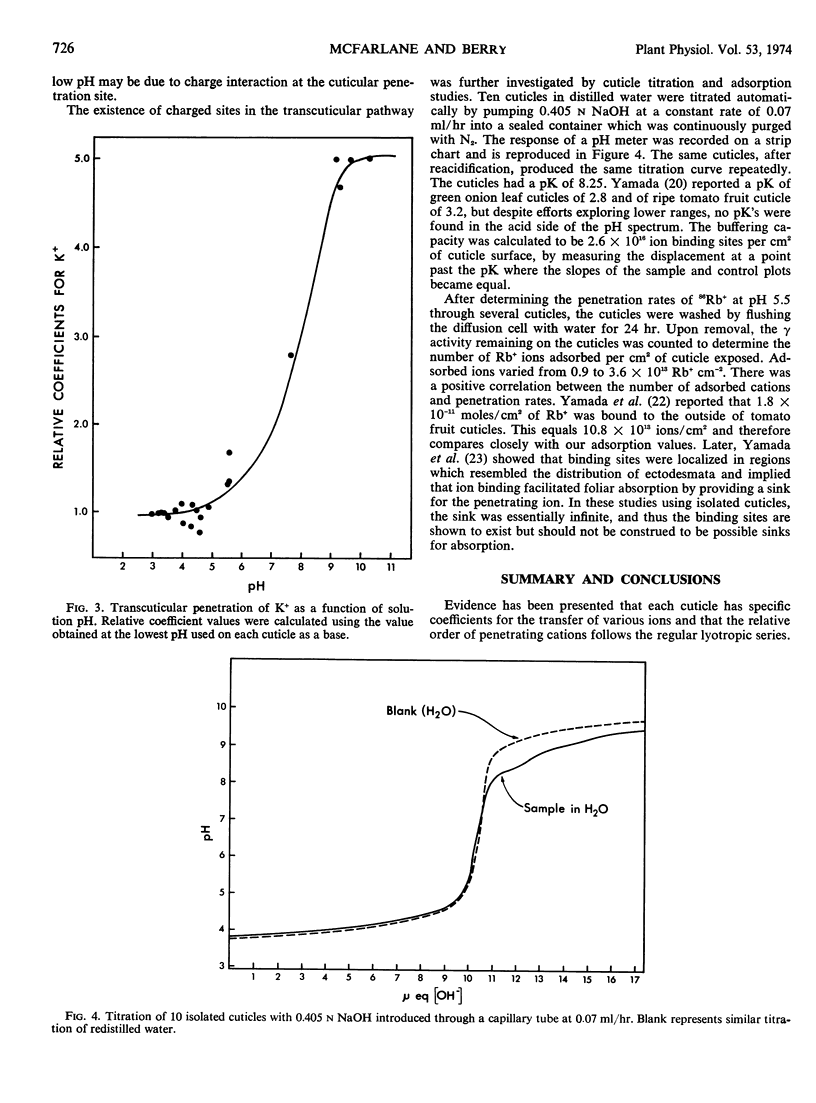
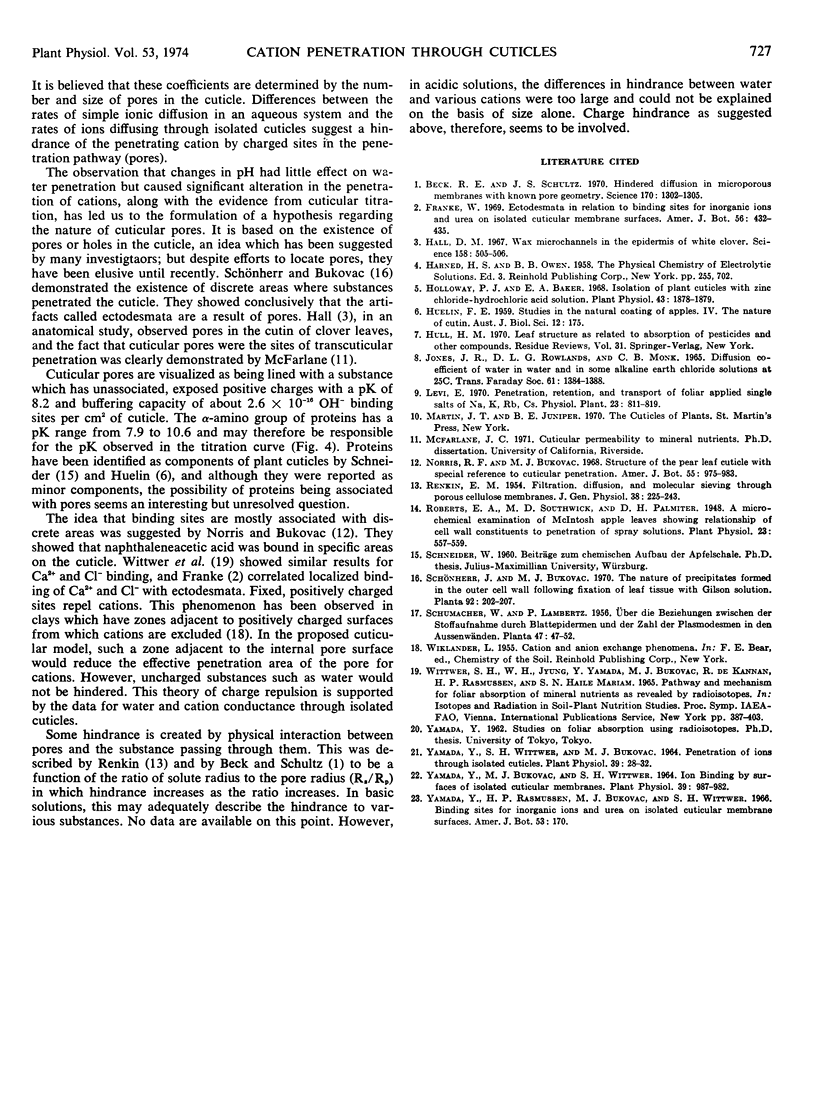
Selected References
These references are in PubMed. This may not be the complete list of references from this article.
- Beck R. E., Schultz J. S. Hindered diffusion in microporous membranes with known pore geometry. Science. 1970 Dec 18;170(3964):1302–1305. doi: 10.1126/science.170.3964.1302. [DOI] [PubMed] [Google Scholar]
- Franke W. Ectodesmata in relation to binding sites for inorganic ions and urea on isolated cuticular membrane surfaces. Am J Bot. 1969 Apr;56(4):432–435. [PubMed] [Google Scholar]
- Hall D. M. Wax microchannels in the epidermis of white clover. Science. 1967 Oct 27;158(3800):505–506. doi: 10.1126/science.158.3800.505. [DOI] [PubMed] [Google Scholar]
- Holloway P. J., Baker E. A. Isolation of Plant Cuticles With Zinc Chloride-hydrochloric Acid Solution. Plant Physiol. 1968 Nov;43(11):1878–1879. doi: 10.1104/pp.43.11.1878. [DOI] [PMC free article] [PubMed] [Google Scholar]
- RENKIN E. M. Filtration, diffusion, and molecular sieving through porous cellulose membranes. J Gen Physiol. 1954 Nov 20;38(2):225–243. [PMC free article] [PubMed] [Google Scholar]
- Roberts E. A., Southwick M. D., Palmiter D. H. A MICROCHEMICAL EXAMINATION OF McINTOSH APPLE LEAVES SHOWING RELATIONSHIP OF CELL WALL CONSTITUENTS TO PENETRATION OF SPRAY SOLUTIONS. Plant Physiol. 1948 Oct;23(4):557–559. [PMC free article] [PubMed] [Google Scholar]
- Yamada Y., Bukovac M. J., Wittwer S. H. Ion Binding by Surfaces of Isolated Cuticular Membranes. Plant Physiol. 1964 Nov;39(6):978–982. doi: 10.1104/pp.39.6.978. [DOI] [PMC free article] [PubMed] [Google Scholar]
- Yamada Y., Wittwer S. H., Bukovac M. J. Penetration of Ions through Isolated Cuticles. Plant Physiol. 1964 Jan;39(1):28–32. doi: 10.1104/pp.39.1.28. [DOI] [PMC free article] [PubMed] [Google Scholar]


